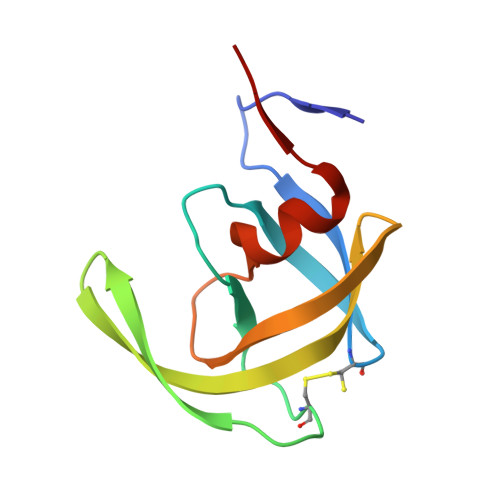Hydrophobic core flexibility modulates enzyme activity in HIV-1 protease.
Mittal, S., Cai, Y., Nalam, M.N., Bolon, D.N., Schiffer, C.A.(2012) J Am Chem Soc 134: 4163-4168
- PubMed: 22295904
- DOI: https://doi.org/10.1021/ja2095766
- Primary Citation of Related Structures:
4DQB, 4DQC, 4DQE, 4DQF, 4DQG, 4DQH - PubMed Abstract:
Human immunodeficiency virus Type-1 (HIV-1) protease is crucial for viral maturation and infectivity. Studies of protease dynamics suggest that the rearrangement of the hydrophobic core is essential for enzyme activity. Many mutations in the hydrophobic core are also associated with drug resistance and may modulate the core flexibility. To test the role of flexibility in protease activity, pairs of cysteines were introduced at the interfaces of flexible regions remote from the active site. Disulfide bond formation was confirmed by crystal structures and by alkylation of free cysteines and mass spectrometry. Oxidized and reduced crystal structures of these variants show the overall structure of the protease is retained. However, cross-linking the cysteines led to drastic loss in enzyme activity, which was regained upon reducing the disulfide cross-links. Molecular dynamics simulations showed that altered dynamics propagated throughout the enzyme from the engineered disulfide. Thus, altered flexibility within the hydrophobic core can modulate HIV-1 protease activity, supporting the hypothesis that drug resistant mutations distal from the active site can alter the balance between substrate turnover and inhibitor binding by modulating enzyme activity.
Organizational Affiliation:
Department of Biochemistry and Molecular Pharmacology, University of Massachusetts Medical School, Worcester, Massachusetts 01605, USA.
















